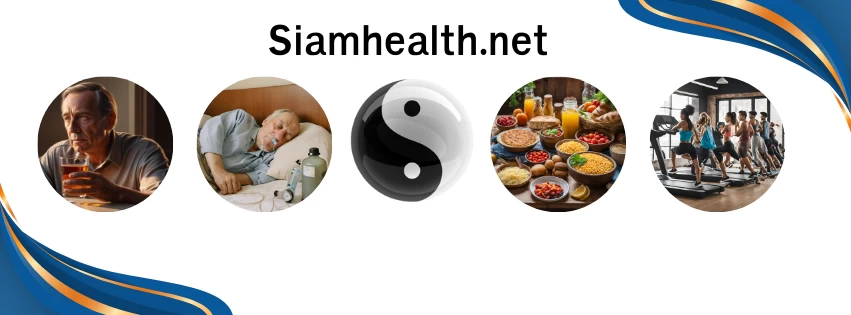
หน้าหลัก | สุขภาพดี | สุภาพสตรี | การแปลผลเลือด | โรคต่างๆ | ยารักษาโรค |วัคซีน | อาหารเพื่อสุขภาพ
ตารางเปรียบเทียบการใช้ยาลดไขมัน
ในตารางจะแสดงชื่อยา ลดไขมันชนิดไหน ประสิทธิภาพของยาเมื่อใช้ร่วมกับ statin ความเห็น12
| Drug | Lipid Effects | Lipid Effects in Combination with Statin | Outcomes Data | Comments |
| Bezafibrate | LDL decrease: 9.6-25% (400 mg) HDL increase: 15-24% (400 mg) Triglyceride decrease: 25-43% (400 mg) |
Further LDL decrease: 1.1% (400 mg) Further HDL increase: 22% (400 mg) Further triglyceride decrease: 31.7% (400 mg) |
Secondary prevention: Prevents composite endpoint of MI and sudden death in a subgroup with triglycerides of 200 mg/dL or higher. No increase in non-CV death | First-line option for triglyceride >10 mmol/L Option for triglyceride 5-10 mmol/L Option for low HDL Reversible increase in serum creatinine Requires renal dose adjustment Limited data with statins |
| Ezetimibe | LDL decrease: 18% (10 mg/day) HDL increase: 1% (10 mg/day) Triglyceride decrease: 8% |
Further LDL decrease: 25%, as add-on Further HDL increase: 3%, as add-on Further triglyceride decrease: 14%, as add-on |
Prevention of CV events in post-acute coronary syndrome patient when added to statin showed a benefit of reducing the primary endpoint (composite of CV death, MI, unstable angina requiring rehospitalization, coronary revascularization or stroke) by 6.4% vs statin alone In intermediate outcomes studies, ezetimibe did not reduce regression of carotid intima-media thickness (surrogate marker) when added to a statin |
Efficacy studied in combination with atorvastatin, fluvastatin, lovastatin, pravastatin, and simvastatin Role as statin add-on to reduce LDL if HDL and triglyceride satisfactory |
| Fenofibrate | LDL decrease: 20.6% (145 mg) HDL increase: 11% (145 mg) Triglyceride decrease: 23.5-50.6% (greatest drop in patients with highest triglycerides) (145 mg) |
Further LDL decrease: 0-6% (200 mg) Further HDL increase: 13-17% (200 mg) Further triglyceride decrease: 20-32% (200 mg) |
Prevention of CV events in type 2 diabetes: Did not reduce primary composite outcome (nonfatal MI or CV death). Improved outcomes included nonfatal MI (24% decrease), coronary revascularization (21% decrease), progression to albuminuria, and reduced laser treatments for retinopathy. Nonsignificant increase in risk of CV death. As statin add-on, did not lower risk of non-fatal MI, nonfatal stroke, or CV death more than statin alone in patients with type 2 diabetes at high risk for CV disease |
First-line option for triglyceride >10 mmol/L (about 1000 mg/dL) Option for triglyceride >500 mg/dL or 5-10 mmol/L Option for low HDL Preferred over gemfibrozil for use with statins Requires renal dose adjustment Associated with reversible increase in serum creatinine |
| Gemfibrozil | LDL: No effect HDL increase: 6% (1200 mg/day) Triglyceride decrease: 33-50% (greatest drop in patients with highest triglycerides) (1200 mg/day) |
Further triglyceride decrease: 41% Further HDL increase: 9% |
Primary prevention of coronary heart disease Secondary prevention of cardiac events in men with low HDL |
First-line option for triglyceride >10 mmol/L (about 1000 mg/dL) Option for triglyceride >500 mg/dL or 5-10 mmol/L Option for low HDL Requires renal dose adjustment Avoid with statin |
| Icosapent ethyl | LDL decrease: 5% HDL decrease: 4% Triglyceride decrease: 27% |
Further triglyceride decrease: 21.5% (4 g/day), 10.1% (2 g/day) Further LDL decrease: 6.2% (4 g/day) |
A study, REDUCE IT, is underway to look at reduction in CV events with icosapent ethyl | Option for triglyceride >500 mg/dL Safe for use with statins Use caution with fish or shellfish allergy |
| Niacin | LDL decrease: 14-17% (Niaspan 2 g/day); 12% (niacin immediate-release 1.5 g/day and Niaspan 1.5 g/day) HDL increase: 22-26% (2 g/day Niaspan); 17% (niacin immediate release 1.5 g/day); 20-22% (Niaspan 1.5 g/day) Triglyceride decrease: 20-50% |
Further LDL decrease: 1-5% (Niaspan 1 g/day); 10% (Niaspan 2 g/day) Further HDL increase: 24% (Niaspan 2 g/day); 15-17% (Niaspan 1 g/day) Further triglyceride decrease: 24% (Niaspan 2 g/day); 12-22% (Niaspan 1 g/day) |
Secondary MI prevention; in combination with a resin, slows progression or promotes regression of atherosclerosis; reduces mortality As statin add-on, reduces carotid intima-media thickness (surrogate marker) compared with ezetimibe as statin add-on in patients with lower HDL No CV event benefit from niacin plus statin versus statin alone in patients with well-controlled LDL, low HDL, and high triglycerides |
Option for triglyceride >500 mg/dL (about 5 mmol/L) Raises HDL more than any other agent Dose-dependent risk of hyperglycemia (especially in patients with type 2 diabetes) and liver toxicity May increase risk of statin myopathy |
| Omega-3 ethyl esters | LDL increase: 44.5% (4 g/day) HDL increase: 9.1% (4 g/day) Triglyceride decrease: 45% (4 g/day) |
LDL increase: 0.7% (4 g/day) Further HDL increase: 3.4% (4 g/day) Further triglyceride decrease: 29.5% (4 g/day) |
Secondary prevention: Reduces cardiovascular death; sudden death; and combined endpoint of death, nonfatal MI, and nonfatal stroke Secondary prevention in patients with, or at risk for, type 2 diabetes: did not reduce CV events |
Option for triglyceride >500 mg/dL (about 5 mmol/L) Safe for use with statins Associated with an increase in risk for recurrence of symptomatic atrial fibrillation or flutter within first 3 months of therapy Use with caution with fish or shellfish allergy |
